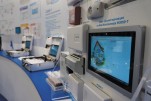Convergent Solutions on Modern Facilities

Today the convergence of security systems and building automation systems is an actively developing subject. It is convincingly demonstrated by the proceedings of leading international events in this field [1, 2]. In Russia, this area has developed mostly in isolation for a long time, although leading domestic experts have constantly noted the need for an integrated approach to the design of modern facilities and inextricable connection between security and building automation matters [3]. The urgent situation was associated primarily with restrictions imposed by safety regulations and underdeveloped engineering solutions. Meanwhile, at modern complex facilities, especially in high-rise construction, requirements are increasing not only for the abovementioned areas, but also for environmental quality. This causes the need to increase the volume of utility equipment used in both security systems and building utility equipment control. It turns out that the equipment used often duplicates each other and perform equivalent functions. Such negative phenomena lead not only to the higher financial component of the project, but also to lower reliability, since the probability of failure is higher when there are many equipment units. Attempts to overcome this situation were reflected in the proceedings of the first Intersec Forum in 2016. There, for the first time, the design and creation of all aspects of safety at the facility, the management of engineering equipment, as well as its development and functioning throughout the life cycle were viewed as a single strategic task aimed at optimizing and ensuring high quality indicators throughout the entire operation period. It was proposed to consider any object as a project based on 20 core technologies and using one network, one language and five scenarios elaborated in detail and covering the development of most life situations. These scenarios, tentatively called Fire, Access, Meeting, Storm and Break-In solve the problems of managing most of the routine and emergency situations in the building and were demonstrated under the motto “Digital. Individual. Network.” Decisions made at the planning stage are calculated so as to ensure their relevance and the absence of significant changes throughout the entire facility life cycle. This allows for optimized preliminary investments, productivity and sustainability and integrity of the strategy that uses an interdisciplinary approach and the project’s orientation to the future.
Full content of this issue you can read here
The full version of the article can be read in our printed issue, also you can subscribe to the web-version of the magazine
 Text: Vladimir Maximenko
Text: Vladimir Maximenko


